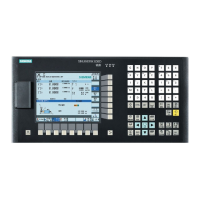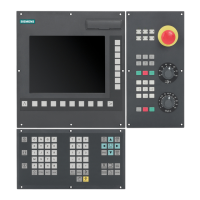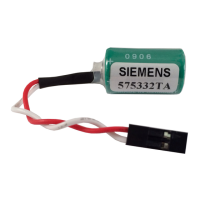Programming and Operating Manual (Milling)
128 6FC5398-4DP10-0BA6, 09/2017
Each data type requires its own program line. However, several variables of the same type can be defined in one line.
Example:
DEF INT PVAR1, PVAR2, PVAR3=12, PVAR4
Example for STRING type with assignment:
DEF STRING[12] PVAR="Hello"
; Define variable PVAR wi th a maximum of 12 char-
acters and assign string "Hello"
In addition to the individual variables, one or two-dimensional fields of variables of these data types can also be defined:
;One-dimensional field, type INT, n: i nteger
;Two-dimensional field, type INT, n, m : integer
Example:
;Field with 3 elements of the type INT
Within the program, the individual field elements can be reached via the field index and can be treated like individual
variables. The field index runs from 0 to a small number of the elements.
Example:
;The third field element (with index 2 ) is assigned the value
24.
Value assignment for field with SET instruction:
;After the 3rd field elem ent, different values are assigned.
Value assignment for field with REP instruction:
;After field element [4] - all are assigned the same value ,
here 2.
Reading and writing PLC variables
Fu n ctionality
To allow rapid data exchange between NC and PLC, a special data area exists in the PLC user interface with a length of 512
bytes. In this area, PLC data are compatible in data type and position offset. In the NC program, these compatible PLC
variables can be read or written.
To this end, special system variables are provided:
-bit value)
;Data word (16-bit value)
;Data double-word (32-bit value)
-bit value)
"n" stands here for the position offset (start of data area to start of variable) in bytes
;Reading a REAL value, offset 4 (starts at byte 4 of range)
Note
The reading of variables generates a preprocessing stop (internal STOPRE).
Note
Writing of PLC tags is generally limited
to a maximum of three tags (elements).
Where PLC tags are to be written in rapid succession, one element will be required per write operation.
If more write operations are to be executed than there are elements available, then block transfer will be requir
ed (a
preprocessing stop may need to be triggered).
$A_DBB[1]=1 $A_DBB[2]=2 $A_DBB[3]=3

